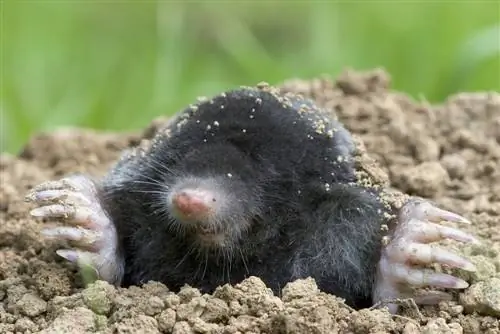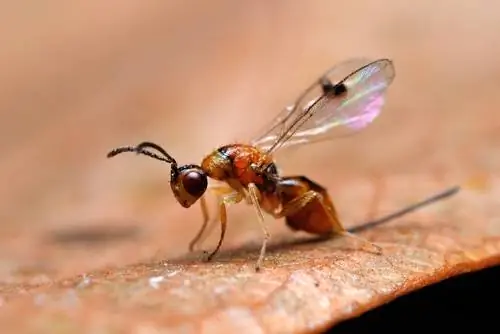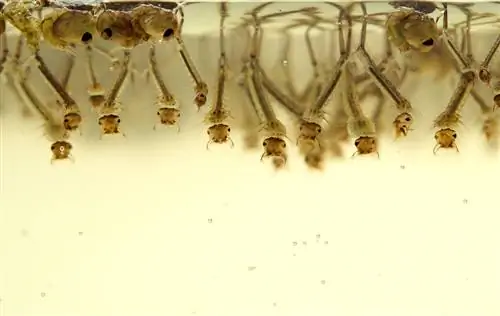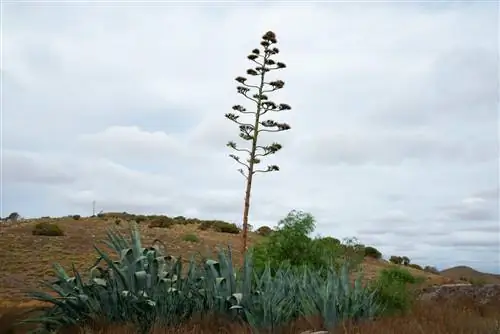- Author admin [email protected].
- Public 2023-12-16 16:46.
- Last modified 2025-01-23 11:22.
Moles throw molehills and have very poor eyesight. Everyone knows that. But did you also know that a mole has a unique organ and creates a sleeping chamber in its burrow? Find out a lot of interesting facts about the mole's lifestyle below.

What is the lifestyle of a mole?
The mole's lifestyle is characterized by unique features: it inhabits self-dug tunnel systems with various chambers, such as storage and sleeping chambers, does not follow a day-night rhythm and is a useful animal that eats pests and loosens the soil.
The appearance of the mole
Moles are cute creatures: They grow up to16cm long and weigh 130g and are therefore smaller than a rat. With its pointed snout, very small eyes and large bladed front paws, it is truly a special mammal.
Excursus
The mole's sixth sense
Moles have an organ that no other animal on earth has: theEimer organ This is located in the skin on the nose of the trunk and has five times as many nerve fibers as our hand. This allows the mole to sense, for example, when a worm moves its muscles. The mole also has a very good sense of smell and can hear significantly better than us.
The life cycle of the mole
Moles arelonersMoles willing to mate only come together during the mating season between February and April to provide offspring. At this time, males leave their territory, which means more molehills can be observed. Female moles give birth for four weeks and give birth to two to seven young between March and the end of MayThey only open their eyes after about three weeks and look for their own territory at the age of about six weeks. The mortality rate of the little ones is very high. Over half do not reach sexual maturity in the next year. Moles canlive up to seven years; However, only a few lucky animals die of old age.
The Mole's Tunnel System
Moles are known to dig tunnel systems. Depending on the type of passage and the time of year, the passages are between 10 and 100cm deep. In winter, the mole digs much deeper to find food.
A mole digs around seven meters per hour, which is why its burrow is a considerable length of up to 200m in total can. We see the excavation on the surface as a molehill. The mole creates several chambers in the tunnel system, including:
- Pantries
- a living and nesting chamber
- Waterhole
When is the mole active?
Many people wonder whether the mole is active at night or during the day. But since the mole lives underground, where the rhythm of day and night is practically irrelevant, it does not follow it. Instead, the mole haswaking and sleeping phases, each about four hours.
The mole as a beneficial insect
The mole is hated by lawn lovers because it leaves unsightly piles on the beautiful lawn. Apart from this visual detail, the mole is a real blessing for every ornamental and kitchen garden: moles are great pest killers and pure carnivores, which is why they do no damage to plants - completely different from, for example, moles. B. the vole. They eat at least half of their body weight in grubs, worms, larvae, snails, etc. every day and thus keep the garden free of pests. They also aerate the soil through their digging activity and thus improve its quality.
Tip
The mole is under protection. Therefore, he may not be killed, caught, or hunted. Only distribution using non-hazardous means is permitted. However, it is questionable whether this garden protector should be driven away.






